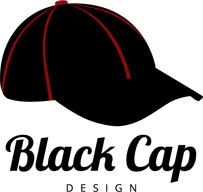Mobile devices have become the driving force for recent changes in website design. Handheld devices with small screens have created a demand for responsive design; layout that changes automatically to suit your device type and screen resolution (see our blog post titled Responsive Web Design: The Silver Bullet for Mobile-friendly Websites?). This means Web Designers and Developers are on the lookout for new ways to present information that will work on both large and small screens. Enter the “one page” website.
One page websites make use of long scrolling pages and internal links rather than a series of linked pages. A single page website using long scrolling pages has significant implications for the structure of the website itself including how information is stored, presented and managed. It also has an impact on SEO.
Here are a few examples of sites that make use of long scrolling pages:
- The University of Notre Dame – http://www.nd.edu/
- Tinke – http://www.zensorium.com/tinke/
One Page Websites – The PROS:
- Long scrolling pages make it easy for mobile visitors to swipe the screen to access information – without being dependent on using a menu.
- Since all of the content is stored on a single page, there is no delay associated with loading a new page.
- Sites with long scrolling pages are unique, so they definitely have a “cool” factor.
One Page Websites – The CONS:
- Search Engine Optimization (SEO) is compromised. A traditional website gives you the ability to include ‘meta data’ on a page-by-page basis to help search engines (this includes a Page Name in the URL, a Page Title, a Content Description and a top-level page heading). Search engines like Google, Bing & Yahoo use this information to index and rank your site. If a long scrolling page converts 10 pages of content into a single page, 10 sets of meta data is turned into a single set. This has the potential to hurt your SEO by a factor of 10.
- Visitors may get lost. If you use a traditional page structure, there are visual cues for visitor orientation (‘you are here’) – including navigation menu markers, page headings and a breadcrumb trail. The most powerful orientation cue is the navigation menu marker. This CAN be implemented to some degree on long scrolling pages, however because users are scrolling through a series of subheadings on a single page, they may become disoriented; particularly anyone used to the traditional method of website navigation. It has been well documented that disoriented visitors will quickly leave your site.
- This type of design is significantly more challenging to manage independently.
Long Scrolling Web Pages Will Work Well:
- If mobile devices will be the primary way people will access your site
- If you are an early adopter or “cool” is important
- If you don’t have many pages on your site
- If you don’t have a lot of content
- If SEO isn’t a big consideration
- If you have experience with website management, or you will have someone else managing your site
If you are trying to decide on a traditional website vs. long scrolling pages, please contact us at Black Cap Design 705-927-2308 or send us an email message at .
